Description
The instruction for medical use of Ramipril medicine of Viv the Pharmaceutical Trade name Ramipril of Viv the Pharmaceutical International unlicensed name Ramipril Lekarstvennaya a form of the Tablet of 5 mg and 10 mg Structure One tablet contains active agent: ramiprit 5 mg or 10 mg, excipients: cellulose microcrystalline RN-102, starch corn prezhelatinizirovanny, lactoses monohydrate, Natrii hydrocarbonas, sodium of a kroskarmelloz, aerosil, gland (III) oxide yellow (E 172), gland (III) oxide red (E 172), sodium stearit fumarating. The description of the Tablet of light yellow color, round shape with a biconvex surface, insignificant impregnations and marbling are allowed (for a dosage of 5 mg). Tablets of light pink color, round shape with a biconvex surface, are allowed insignificant impregnations and marbling (for a dosage of 10 mg). Pharmacotherapeutic group the Drugs influencing renin-angiotenzinovuyu a system. Inhibitors angiotensin-the turning enzyme (ATE). Ramipril the ATX C09AA05 Code ramiprit the Pharmacological Pharmacokinetics Absorption Later properties of intake quickly is soaked up from digestive tract: peak concentration of a ramipril in plasma are reached within one hour. Extent of absorption makes about 56% of the accepted dose and does not depend on meal. Almost it is completely metabolized (generally – in a liver) with formation of an active metabolite – the ramiprilat (inhibits APF-angiotensin-converting enzyme 6 times more actively, than ramiprit). The bioavailability of the ramiprilat is 45%. The maximum concentration of the ramiprilat in blood plasma is reached in 2-4 hours. Steady plasma concentration of the ramiprilat after single dose of a usual dose of a ramipril are reached for the 4th day. Distribution Linking with proteins of plasma makes about 73% for a ramipril and 56% for the ramiprilat. Metabolism Ramipril is almost completely metabolized in ramiprilat, diketopiperazine ether, diketopiperazine acid and glucuronides of a ramipril and the ramiprilat. Removal Removal of metabolites generally through kidneys. Plasma concentration of the ramiprilat deviate polifazno. In view of its powerful saturated linking with APF and slow dissociation from enzyme ramiprilat shows a long phase of removal at very low plasma concentration. Effective elimination half-life of the ramiprilat makes from 13 to 17 hours for doses of 5 and 10 mg. The antihypertensive effect begins in 1-2 hours after intake of a single dose of drug, the maximum effect develops in 3-6 hours after reception and remains within 24 hours. At daily use the hypotensive activity gradually increases within 3-4 weeks. It was shown that the antihypertensive effect is maintained more than 2 years at long therapy. Sharp interruption of reception of a ramipril does not lead to sharp increase in arterial blood pressure (ricochet). Special groups of patients At patients with a renal failure the renal removal of the ramiprilat is reduced as the renal clearance of the ramiprilat directly correlates with clearance of creatinine. It leads to increase in concentration of the ramiprilat in plasma which decrease more slowly, than at subjects with normal function of kidneys. At patients with an abnormal liver function the metabolism of a ramipril in ramiprilat drags on in view of reduced activity of hepatic esterases. Such patients show the increased levels of a ramipril in plasma. However peak concentration of the ramiprilat in plasma are identical to that at patients with normal function of a liver. The lactation After the single accepted dose ramiprit inside drug and its metabolite were not found in breast milk. However the effect of repeated doses is not known. Pharmacodynamics the Mechanism of action Is established that key factor of development of arterial hypertension is the APF angiotensin-converting enzyme known also under the name of a dipeptidilkarboksipeptidaz of I) which catalyzes transformation of angiotensin I into angiotensin II – active vasoconstrictive agent and also causes bradykinin disintegration – a vazodilatator. Ramiprilat, an active metabolite Ramipril of Viv Pharm, inhibiting APF in plasma and fabrics, including a vascular wall, interferes with formation of angiotensin II and disintegration of bradykinin that leads to a vazodilatation and a lowering of arterial pressure. At decrease in concentration of angiotensin II in blood its inhibiting influence on secretion of renin as negative feedback is eliminated that leads to increase in activity of renin of blood plasma. Increase in activity of a kallikrein-kinin system in blood and fabrics causes cardioprotective and endotelioprotektivny action of a ramipril due to activation of a prostaglandinovy system and, respectively, increase in synthesis of prostaglandins stimulating formation of nitrogen oxide (NO) in endotheliocytes. Angiotensin II stimulates development of Aldosteronum therefore reception Ramipril of Viv leads Pharm to decrease in secretion of Aldosteronum and increase in serumal concentration of potassium ions. At patients with arterial hypertension reception Ramipril of Viv leads Pharm to decrease in the ABP in a prone position and standing, without compensatory increase in the heart rate (HR). Ramipril of Viv Pharm considerably reduces the general peripheric resistance of vessels (GPRV), practically without causing changes in a renal blood-groove and glomerular filtration rate. At patients with arterial hypertension ramiprit slows down development and progressing of a hypertrophy of a myocardium and a vascular wall. Heart failure In addition to standard therapy by diuretics and cardiac glycosides (on doctor’s orders) Ramipril of Viv Pharm is effective at patients with heart failure of the II-IV classes according to functional classification of NYHA (New York Cardiological Association). Ramipril of Viv Pharm reduces OPSS (reduction of an afterload by heart), increases the capacity of the venous course and reduces the filling pressure of a left ventricle that, respectively, leads to reduction of preload of heart. At these patients at reception of a ramipril the increase in warm emission, fraction of emission and improvement of shipping of physical activity and improvement of an indicator of cardiac index is observed. At a diabetic and not diabetic nephropathy reception Ramipril of Viv Pharm slows down the speed of progressing of a renal failure and time of approach of an end-stage of a renal failure and, thanks to it, reduces the need for procedures of a hemodialysis or transplantation of a kidney. At initial stages of a diabetic or not diabetic nephropathy Ramipril of Viv Pharm reduces the degree of manifestation of an albuminuria. At patients with high risk of developing cardiovascular diseases owing to vascular defeats (the diagnosed coronary heart disease, obliterating diseases of peripheral arteries in the anamnesis, a stroke in the anamnesis), or diabetes with not less than one accessory factor of risk (microalbuminuria, arterial hypertension, increase in concentration of the general cholesterol [GC], decrease in concentration of cholesterol of lipoproteins of the high density [HS-LPVP], smoking) the accession of a ramipril to standard therapy considerably reduces the frequency of development of a myocardial infarction, stroke and mortality from the cardiovascular reasons. Besides, Ramipril of Viv Pharm reduces indicators of the general mortality and also the need for procedures of revascularization, and slows down emergence or progressing of chronic heart failure. At patients with the heart failure which developed in the first days of an acute myocardial infarction (2-9 days) at reception Ramipril of Viv Pharm, since 3 till the 10th day of an acute myocardial infarction, decreases risk of rate of mortality (by 27%), risk of sudden death (for 30%), risk of progressing of chronic heart failure to heavy (the III-IV functional class on classification of NYHA) / resistant to therapy (for 27%), the probability of the subsequent hospitalization because of development of heart failure (for 26%). In the general population of patients and also at patients with diabetes, both with arterial hypertension, and with normal indicators Ramipril of Viv Pharm considerably lowers the arterial blood pressure risk of development of a nephropathy and developing of a microalbuminuria. Indications – treatment of arterial hypertension – prevention: decrease in cardiovascular risk and a smernost at patients with the confirmed coronary heart disease, a myocardial infarction in the anamnesis or without it, at patients with a stroke in the anamnesis, at patients with occlusal damages of peripheral arteries, at patients with diabetes and with one and more accessory factor of risk (a microalbuminuria, arterial hypertension, increase in plasma concentration OH, decrease in plasma concentration of HS-LPVP, smoking) – a diabetic or not diabetic nephropathy: an early diabetic glomerular nephropathy at patients with a microalbuminuria the expressed diabetic glomerular nephropathy at patients with a macroproteinuria and with one, at least, cardiovascular risk factor, over 3 g/days stated above the expressed glomerular not diabetic nephropathy with a macroproteinuria – secondary prevention after an acute myocardial infarction (in 48 hours): decline in mortality after a sharp phase of a myocardial infarction at patients with clinical signs of heart failure – treatment of symptomatic heart failure. A route of administration and doses For intake. Ramipril is recommended to accept Viv Pharm daily at the same time. Ramipril Viv Pharm can be accepted in time or out of meal as the bioavailability does not depend on meal. Ramipril Viv Pharm needs to be accepted with enough liquid. It is impossible to chew or crush a tablet. The adult Patients receiving treatment by diuretics at the beginning of therapy using Ramipril of Viv Pharm developing of hypotension is possible, this effect is more probable at the patients receiving diuretics. In that case it is necessary to show care as such patients can have a loss of liquids or salts. If it is possible, diuretics should be cancelled in 2 or 3 days prior to therapy Ramipril of Viv Pharm. At patients with hypertensia without cancellation of diuretics, treatment Ramipril of Viv Pharm should be begun with a dosage in 1.25 mg. It is necessary to control the serumal level of potassium and a diuresis. In the subsequent a dosage Ramipril of Viv Pharm has to be corrected according to the target level of arterial blood pressure. Arterial hypertension the Dosage is selected individually on a profile of the patient and levels of arterial blood pressure. Ramipril of Viv Pharm can be applied as monotherapy or in a combination with other antihypertensive drugs. The initial dosage Therapy Ramipril of Viv Pharm has to begin step by step. The recommended starting dosage makes 2.5 mg a day. At patients renin-angiotensin-aldosteronovoy of a system can happen considerable pressure decrease after reception of the first dose to superactivity. For such patients the recommended initial dosage makes 1.25 mg. Treatment has to begin under observation of the doctor. Titration of a dose and the supporting dosage If necessary the dosage should be doubled at an interval of two or four weeks, thus, target pressure will be reached gradually. The maximum admissible dosage Ramipril of Viv Pharm makes 10 mg a day. The drug is taken once a day. Prevention of cardiovascular diseases the Recommended initial dosage makes 2.5 mg Ramipril of Viv Pharm in day. Titration of a dose and the supporting dosage Depending on tolerance of active agent a dosage gradually increases. It is recommended to double a dose in 1-2 weeks after an initiation of treatment and then in 2-3 weeks to raise to the target supporting dosage in 10 mg Ramipril Viv Pharm in day. See also dosing at the patients accepting diuretics. The diabetic or not diabetic nephropathy the Recommended initial dosage makes 1.25 mg Ramipril of Viv Pharm in day. Titration of a dose and the supporting dosage Depending on tolerance of active agent a dosage gradually increases. It is recommended to double a dose to 2.5 mg a day in two weeks and then up to 5 mg a day in two weeks. Patients with diabetes and, at least, one accessory factor of risk the Recommended initial dosage makes 2.5 mg Ramipril of Viv Pharm in day. Titration of a dose and the supporting dosage Depending on tolerance of active agent a dosage gradually increases. It is recommended to double a dose to 5 mg a day in two weeks and then up to 10 mg a day in two-three weeks. The maximum recommended daily dose makes 10 mg a day. Patients with not diabetic nephropathy and a macroproteinuria over 3 g/days the Recommended initial dosage makes 1.25 mg Ramipril of Viv Pharm in day. Titration of a dose and the supporting dosage Depending on tolerance of active agent a dosage gradually increases. It is recommended to double a dose to 2.5 mg a day in two weeks and then up to 5 mg a day in two weeks. Symptomatic heart failure For patients with the previous therapy by diuretics the recommended initial dosage makes 1.25 mg Ramipril of Viv Pharm in day. Titration of a dose and the supporting dosage Titration has to be made by means of doubling of a dosage Ramipril of Viv Pharmaceutical each one or two weeks to the maximum daily dosage in 10 mg. Division of a dose into two receptions in day is recommended. Secondary prevention after an acute myocardial infarction with heart failure the Initial dosage makes 2.5 mg twice a day and is performed in 48 hours after a myocardial infarction at clinically and hemodynamically stable patients within three days. If the initial dosage is badly had, entered double reception on 1.25 mg within 2 days before increase in a dosage to 2.5 mg and 5 mg into 2.5 mg twice a day. If the dosage cannot be raised to 2.5 mg twice a day, treatment should be cancelled. Dosing at the patients accepting diuretics is See also higher. Titration of a dose and the supporting dosage the Daily dosage consistently increases by means of doubling of a dose with intervals from 1 to 3 days to a target daily dosage in 5 mg twice a day. At an opportunity the supporting dosage has to be divided into two receptions. If the dosage cannot be raised to 2.5 mg twice a day, treatment should be cancelled. Concerning treatment of patients with heavy heart failure (NYHA class IV) right after a myocardial infarction the experience is limited. If the decision on treatment of such patients is made, we recommend an initial dosage in 1.25 mg once in day, and manifestation of extra care at increase in a dosage. Special groups of patients Patients the Daily dosage at patients with a renal failure has to decide on a renal failure on the basis of clearance of creatinine: – if the clearance of creatinine ≥ 60 ml/min., is not required change of an initial dosage (2.5 mg/days), the maximum daily dosage makes 10 mg. – if the clearance of creatinine in the range of 30-60 ml/min., is not required change of an initial dosage (2.5 mg/days), the maximum daily dosage makes 5 mg. – if clearance of creatinine in the range of 10-30 ml/min., the initial dosage makes 1.25 mg/days, the maximum daily dosage makes 5 mg. – patients with hypertensia who are on a hemodialysis: ramiprit poorly is removed dialysis, the initial dosage makes 1.25 mg/days, the maximum daily dosage makes 5 mg. The drug should be taken in several hours after dialysis completion of the procedure. Patients with an abnormal liver function At patients with an abnormal liver function therapy Ramipril of Viv Pharm has to begin only under strict medical observation, the maximum daily dosage Ramipril of Viv Pharm makes 2.5 mg. Elderly patients the Initial dosage has to be lower, and the subsequent titration of a dosage by more step as at this group there is an increased probability of side effects. It is necessary to consider a low initial dosage of 1.25 mg of a ramipril.
e treatments patients have to be in initial fa under medical observation. Children Ramipril of Viv Pharm is not recommended to use for children and teenagers 18 years in view of insufficient amount of data on safety and efficiency are younger. There is only a limited experience of use of a ramipril for children. Side effects Side effects of a ramipril include dry, constant cough, hypotonia. Serious side effects include a Quincke’s disease, a hyperpotassemia, a liver or renal failure, pancreatitis, serious skin reactions and a neutropenia / agranulocytosis. The following categories are applied to stratification of frequency of emergence of side effects. Very frequent (over 1/10), frequent (from 1/100 to 1/10), infrequent (from 1/1000 to 1/100), rare (from 1/10000 to 1/1000), very rare (less than 1/10000), unknown (assessment according to available data is impossible). In each frequency category the side effects are provided as decrease in weight. Often – a headache, dizziness – unproductive cough, bronchitis, sinusitis, dispnoe – inflammation, digestive disturbances, abdominal pain, dyspepsia, diarrhea, nausea, vomiting – a dieback, especially makulopapulezny – muscular spasms, myalgias – increase in level of serumal potassium – hypotension, orthostatic hypotension, a syncope – a stethalgia, fatigue Infrequently – myocardium ischemia, including stenocardia or a myocardial infarction, tachycardia, arrhythmia, heartbeat, peripheral swell – an eosinophilia – dizziness, paresthesias, an ageusia, a dysgeusia – a disorder of vision, including indistinct sight – congestion of a nose, a bronchospasm, including complications of bronchial asthma – pancreatitis (about cases of a lethal outcome it was reported exclusively seldom at intake of APF inhibitors), increase in pancreatic enzymes, a Quincke’s disease of a small intestine, pain in epigastriums, including gastritis, constipations, dryness in a mouth – a renal failure, including an acute renal failure, increase in a diuresis, strengthening of the existing proteinuria, increase in level of urea in plasma, increase in level of creatinine in plasma – a Quincke’s disease, in exceptional cases, can lead suffocation to a lethal outcome, a skin itching, the increased perspiration – arthralgias – anorexia, a loss of appetite – inflows – temperature increase – increase in level of liver enzymes and/or the connected bilirubin – tranzitorny erectile dysfunction, decrease in a libido – suppressed mood, uneasiness, nervousness, concern, sleep disorders, including somnolence Seldom – a leykotsitopeniya (including a neutropenia or an agranulocytosis), an erythrocytopenia, decrease in hemoglobin, thrombocytopenia – a tremor, balance disorder – conjunctivitis – a hearing disorder, a ring in ears – a glossitis – exfoliative dermatitis, a small tortoiseshell, onikholizis – a stenosis of vessels, hypoperfusion, vasculites – an asthenia – cholestatic jaundice, damage of cells of a liver – confusion of consciousness Is very rare – the photosensitivity Frequency is unknown – oppression of function of marrow, a pancytopenia, hemolytic anemia – cerebral ischemia, including ischemic strokes and the tranzitorny ischemic attacks, disturbance of psychomotor skills, burning sensation, a parosmiya – aphthous stomatitis – a toxic epidermal necrolysis, Stephens-Johnson’s syndrome, a multiformny erythema, a bladderwort, strengthening of psoriasis, pemphigoid, a lichenoid dieback or an enantema, an alopecia – decrease in level of serumal sodium – Reynaud’s syndrome – anaphylactic or anaphylactoid reactions, increase in level of antinuclear antibodies – an acute liver failure, cholestatic or cytolytic hepatitis (in exceptional cases – with a lethal outcome) – a gynecomastia – disturbances of attention – a syndrome of inadequate secretion of antidiuretic hormone (SNASAG) of the Contraindication – hypersensitivity to active agent, to any of excipients or the APF any other inhibitors – a Quincke’s disease in the anamnesis (hereditary, idiopathic or owing to intake of APF inhibitors or antagonists of receptors of angiotensin-II (MACAW of II)) – – ramiprit extracorporal procedures during which holding blood contacts to negatively charged surfaces – a considerable bilateral stenosis of renal arteries or a stenosis of renal arteries of the only kidney – pregnancy and the period of a lactation should not be applied at patients with hypotension or with an unstable hemodynamics – a concomitant use of drugs of an aliskiren patients with diabetes and a renal failure (СКФ<, 60 ml/min. / 1.73м2) – children’s age up to 18 years. Medicinal interactions Clinical trials showed that double blockade the system renin-angiotensin-aldosteronovoy (SRAA) at a combination of APF inhibitors, blockers of receptors of angiotensin II or an aliskiren leads to increase of side effects, such as hypotension, hyperpotassemia and decrease in renal function (including an acute renal failure) in comparison with intake of one drug operating on RAAS (see. sections of Contraindication and Special Instructions). Contraindicated combinations Extracorporal procedures during which blood contacts to negatively charged surfaces, such as dialysis or haemo filtration by means of some membranes of an intensive stream (for example, polyacrylonitrile membranes) and aferez dextran sulfate owing to the increased risk of heavy anaphylactoid reactions. If such treatment is necessary, then it is necessary to consider use of other membranes for dialysis or other class of antihypertensive drugs. The medicines containing aliskiren: the combination ramiprit with the medicines containing aliskiren is contraindicated to patients with diabetes or with moderate renal failures and it is not recommended to accept to these patients (see sections Contraindications and Special Instructions). The combinations demanding extra care of Salt of potassium, the heparin, kaliysberegayushchy diuretics and other active agents increasing the level of serumal potassium (including antagonists of angiotensin-II, Trimethoprimum, takroly, cyclosporine): can cause a hyperpotassemia. Level of serumal potassium has to be controlled constantly. Antihypertensive drugs (for example, diuretics) and the other active agents reducing arterial blood pressure (for example, nitrates, tricyclic antidepressants, anesthetics, plentiful alcohol intake, Baclofenum, alfuzozin, docsazozin, Prazozinum, tamsulozin, terazozin): potentiation of risk of hypotension is possible. Angiotonic sympathomimetics and other active agents (for example, Isoproterenolum, Dobutaminum, dopamine, epinephrine), capable to weaken antihypertensive effect Ramipril of Viv Pharm: regular monitoring of arterial blood pressure is recommended. Allopyrinolum, immunodepressants, corticosteroids, procaineamide, cytostatics and other substances which can change a blood picture: the increased probability of hematologic reactions (see. Special instructions). Lithium salts: as APF inhibitors are capable to reduce lithium excretion, increase in toxic effect of lithium is possible. Regular monitoring of serumal level of lithium is required. Anti-diabetic means, including insulin: the hypoglycemia is possible. Regular monitoring of level of glucose of blood is recommended. Non-steroidal anti-inflammatory drugs and acetylsalicylic acid: decrease in antihypertensive effect Ramipril of Viv Pharm is expected. Moreover, simultaneous treatment by APF and NPVP inhibitors can increase risk of dysfunction of kidneys and increase in level of serumal potassium. Special instructions Special group of patients – patients with high risk of hypotension – patients with very superactivity system renin-angiotensin-aldosteronovoy Patients with superactivity renin-angiotensin-aldosteronovoy of a system test risk of especially sharp falling of arterial blood pressure and decrease in renal function owing to APF inhibition, especially in cases of use of APF inhibitors or in common applied diuretic for the first time or at the first increase in a dosage. The considerable activation system renin-angiotensin-aldosteronovoy demanding medical observation with control of level of arterial blood pressure has to be expected at the following patients: – patients with heavy hypertensia – patients with dekompensirovanny stagnant heart failure – patients with hemodynamically significant obstruction of an input and output of a left ventricle (i.e. a stenosis of the aortal or mitral valve) – patients with a unilateral renal artery stenosis of one functioning kidney – patients at whom loss of liquid or salts is available or can develop (patients on diuretics) – patients with cirrhosis and/or ascites – the patients who are exposed to extensive surgery or during anesthesia the receiving drugs with hypotensive effect. Prior to treatment the correction of dehydration, a hypovolemia or loss of salts (at patients with heart failure, however, such treatment has to be weighed against risk of a volume overload of a blood-groove) is recommended. – Double blockade the system renin-angiotensin-aldosteronovoy (SRAA) the Combination of APF inhibitors, blockers of receptors of angiotensin II or an aliskiren increases risk of hypotension, a hyperpotassemia and decrease in renal function (including an acute renal failure). Double blockade of RAAS with use of APF inhibitors, blockers of receptors of angiotensin II or an aliskiren is not recommended. If double blockade is absolutely necessary, treatment has to take place under observation of the expert and regular control of function of kidneys, electrolytes and arterial blood pressure. Simultaneous use of APF inhibitors and blockers of receptors of angiotensin II is not recommended at patients with a diabetic nephropathy. Use of a ramipril in combination with aliskreiny is contraindicated to patients with diabetes or a renal failure (SFK & lt, 60 ml/min. 1.73 sq.m) (see the section Contraindications). Tranzitorny or constant heart failure after a myocardial infarction – patients with risk of myocardial or cerebral ischemia in case of acute hypotension. Patients have to be in an initiation of treatment under medical control. The surgery Is recommended cancellation of APF inhibitors a day before surgical intervention in the presence of such opportunity. Monitoring of function of kidneys Function of kidneys has to be observed prior to the beginning of and during treatment with adequate correction of dosages, especially in the first weeks of treatment. Patients with a renal failure demand separate observation. There is a risk of disturbance of renal function, in particular – at patients with stagnant heart failure or after renal transplantation. The Quincke’s disease the Quincke’s disease (Quincke’s edema) was reported at the patients receiving APF inhibitors, including ramiprit. When developing a Quincke’s disease, drug should be cancelled. Immediately it is necessary to begin the emergency treatment. The patient has to be under observation at least within 12-24 hours and can be written out only after total disappearance of symptoms. At the patients receiving iAPF including drug, it was observed cases of a Quincke’s disease of a small intestine. These patients were disturbed by abdominal pains (at existence or absence of nausea and vomiting). Anaphylactic reactions at desensitization the Probability and weight of anaphylactic and anaphylactoid reactions to poisons of insects and other allergens increases at APF inhibition. Temporary cancellation Ramipril of Viv Pharm has to be considered before desensitization development. The hyperpotassemia the Hyperpotassemia was observed at some patients receiving iAPF, such as Ramipril of Viv Pharm. Patients with risk of a hyperpotassemia include: patients with a renal failure 70 years are more senior, than patients with uncontrollable diabetes or the patients applying the potassium salts, kaliysberegayushchy diuretics and other active agents increasing the level of serumal potassium or patients with dehydration, a warm decompensation or a metabolic acidosis. If simultaneous use of the above-stated substances is shown, then regular monitoring of level of serumal potassium is required. The hyponatremia the Syndrome of inadequate secretion of antidiuretic hormone (SNASAG) and the subsequent hyponatremia is observed at some patients receiving ramiprit. It is regularly recommended to control the level of serumal sodium at elderly people and also at other patients subject to risk of development of a hyponatremia. The neutropenia/agranulocytosis, as well as thrombocytopenia and anemia, were observed seldom, was also reported about cases of suppression of activity of marrow. Monitoring of leukocytes is recommended for detection of a possible leukopenia. In an initial phase of treatment more frequent monitoring at patients with impaired renal function, at patients with associated diseases of connective tissue (system lupus erythematosus, a scleroderma) and at all patients receiving also treatment by other drugs which can cause changes of a picture of blood is recommended. Ethnic distinctions APF Inhibitors cause a Quincke’s disease in patients of negroid race more often, than in patients of europeiodny race. As well as others and APF, ramiprit can be less effective in lowering of arterial pressure at patients of negroid race, it is possible because of a prevalence at such patients of hypertensia with low levels of renin. Cough during treatment of iAPF cough cases were reported. Unproductive cough, constant also stops after treatment interruption. The cough caused by APF inhibitors has to be considered in differential diagnosis of cough. Pregnancy Ramipril of Viv Pharm is not recommended to use in the first trimester of pregnancy and is contraindicated in the second and third trimesters of pregnancy. Therapy using APF inhibitors, such as ramiprit or the MACAW of II, should not begin during pregnancy, except those cases when such therapy in the long mode is considered necessary, patients during planning of pregnancy have to be transferred to alternative antihypertensive drugs with the established safety profile for use during pregnancy. From the moment of pregnancy confirmation the treatment of iAPF should be interrupted immediately and if necessary to appoint alternative antihypertensive drugs. Epidemiological certificates on risk of teratogenecity when using APF inhibitors during the first trimester of pregnancy are not exhaustive, however it is impossible to exclude some increase in risk. Treatment by APF/ARE II inhibitors during the second and third trimesters of pregnancy caused cases of toxic effect on a fruit (dysfunctions of kidneys, an oligoamnios, a delay of ossification of bones of a skull) and in newborns (renal failure, hypotension, a hyperpotassemia). If intake of APF inhibitors happened in the second trimester of pregnancy, ultrasound examinations of kidneys and a skull are recommended. Newborns, whose mothers accepted APF inhibitors, oligurias and hyperpotassemias have to be observed carefully regarding hypotension.
To develop
Additional information
| Ingredient |
|---|





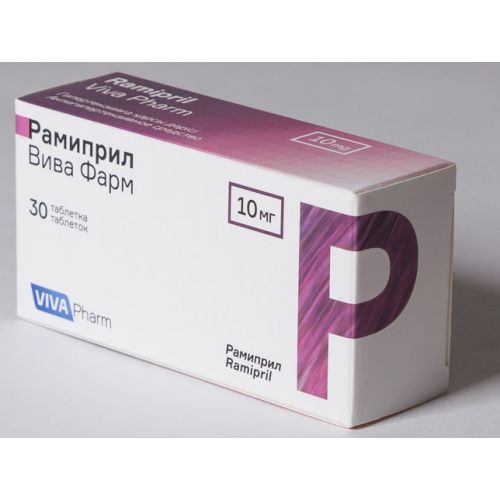

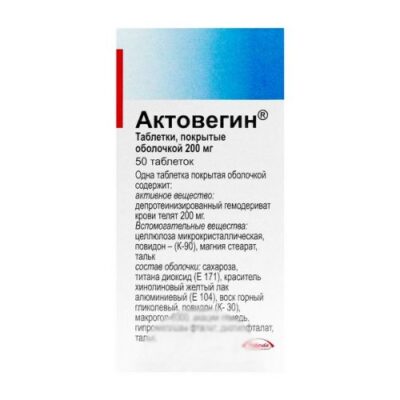
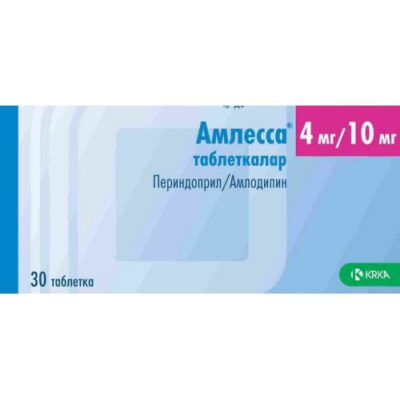
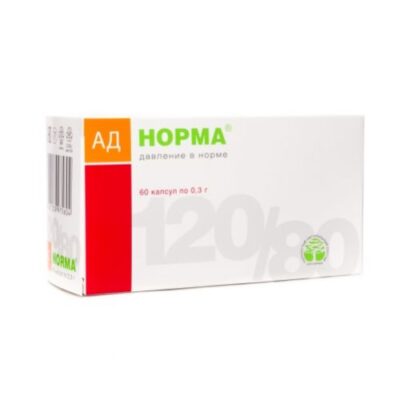
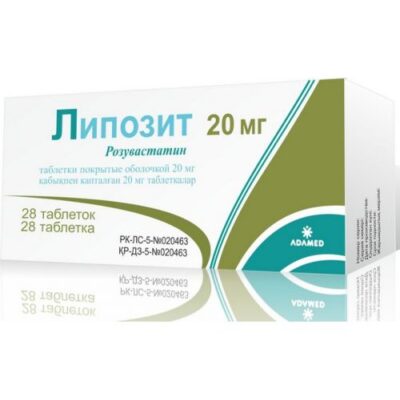
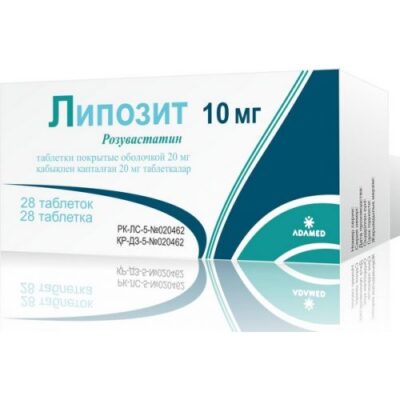
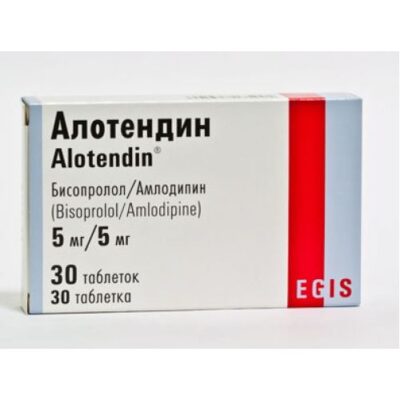
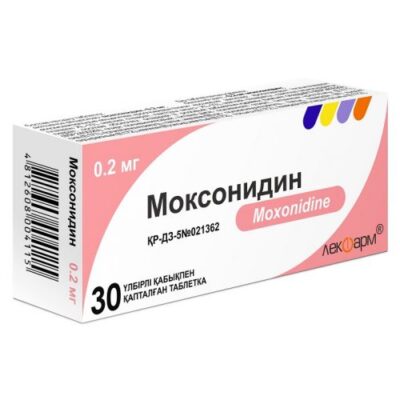
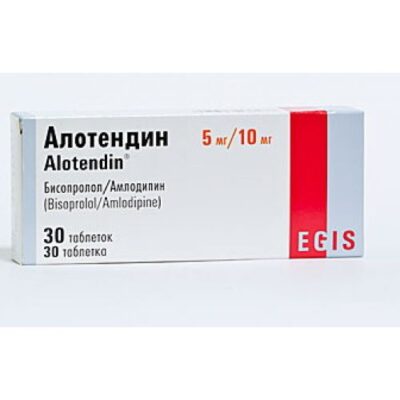
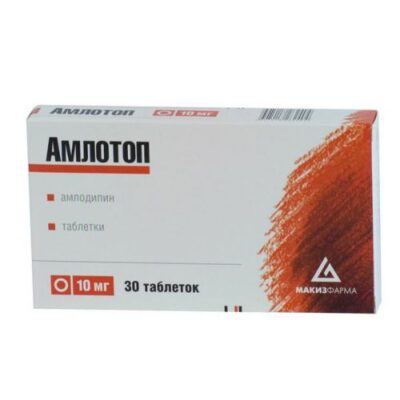
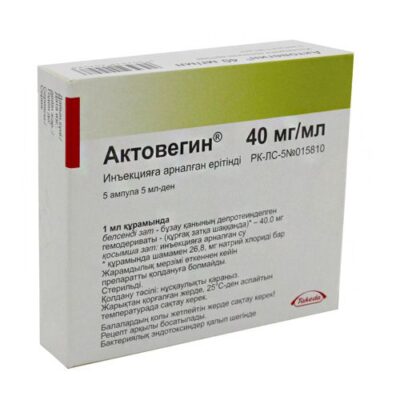






Reviews
There are no reviews yet.